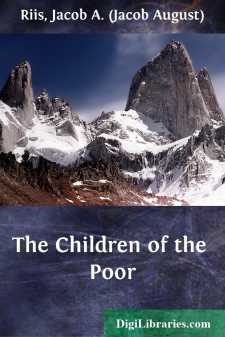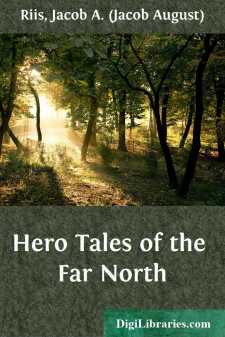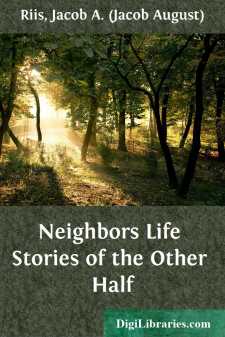Categories
- Antiques & Collectibles 13
- Architecture 36
- Art 48
- Bibles 22
- Biography & Autobiography 813
- Body, Mind & Spirit 142
- Business & Economics 28
- Children's Books 17
- Children's Fiction 14
- Computers 4
- Cooking 94
- Crafts & Hobbies 4
- Drama 346
- Education 46
- Family & Relationships 57
- Fiction 11829
- Games 19
- Gardening 17
- Health & Fitness 34
- History 1377
- House & Home 1
- Humor 147
- Juvenile Fiction 1873
- Juvenile Nonfiction 202
- Language Arts & Disciplines 88
- Law 16
- Literary Collections 686
- Literary Criticism 179
- Mathematics 13
- Medical 41
- Music 40
- Nature 179
- Non-Classifiable 1768
- Performing Arts 7
- Periodicals 1453
- Philosophy 64
- Photography 2
- Poetry 896
- Political Science 203
- Psychology 42
- Reference 154
- Religion 513
- Science 126
- Self-Help 84
- Social Science 81
- Sports & Recreation 34
- Study Aids 3
- Technology & Engineering 59
- Transportation 23
- Travel 463
- True Crime 29
Jacob A. (Jacob August) Riis
Jacob August Riis was a Danish-American social reformer, "muckraking" journalist, and photographer. Born in Denmark in 1849, he is best known for his pioneering work documenting the squalid living conditions in New York City tenements through both his writings and groundbreaking flash photography, exemplified in his seminal work, "How the Other Half Lives" (1890). Riis's work significantly influenced urban reform and highlighted the dire need for housing and sanitation improvements in American cities.
Author's Books:
Sort by:
CHAPTER I. THE PROBLEM OF THE CHILDREN The problem of the children is the problem of the State. As we mould the children of the toiling masses in our cities, so we shape the destiny of the State which they will rule in their turn, taking the reins from our hands. In proportion as we neglect or pass them by, the blame for bad government to come rests upon us. The cities long since held the balance of...
more...
A KNIGHT ERRANT OF THE SEA The Eighteenth Century broke upon a noisy family quarrel in the north of Europe. Charles the Twelfth of Sweden, the royal hotspur of all history, and Frederik of Denmark had fallen out. Like their people, they were first cousins, and therefore all the more bent on settling the old question which was the better man. After the fashion of the lion and the unicorn, they fought...
more...
THE ANSWER OF LUDLOW STREET “You get the money, or out you go! I ain’t in the business for me health,” and the bang of the door and the angry clatter of the landlord’s boots on the stairs, as he went down, bore witness that he meant what he said. Judah Kapelowitz and his wife sat and looked silently at the little dark room when the last note of his voice had died away in the hall. They knew it...
more...
It was Christmas-eve over on the East Side. Darkness was closing in on a cold, hard day. The light that struggled through the frozen windows of the delicatessen store, and the saloon on the corner, fell upon men with empty dinner-pails who were hurrying homeward, their coats buttoned tightly, and heads bent against the steady blast from the river, as if they were butting their way down the street. The...
more...
WHAT THE FIGHT IS ABOUT The slum is as old as civilization. Civilization implies a race to get ahead. In a race there are usually some who for one cause or another cannot keep up, or are thrust out from among their fellows. They fall behind, and when they have been left far in the rear they lose hope and ambition, and give up. Thenceforward, if left to their own resources, they are the victims, not the...
more...
That was the message that came to me from an editor last December just as I was going on a journey. Why he sent it to me I don't know. Perhaps it was because, when I was a little chap, my home was way up toward that white north where even the little boys ride in sleds behind reindeer, as they are the only horses they have. Perhaps it was because when I was a young lad I knew Hans Christian...
more...
CHAPTER I THE MEETING ON THE LONG BRIDGE [Illustration: Our Stork] On the outskirts of the ancient town of Ribe, on the Danish north seacoast, a wooden bridge spanned the Nibs River when I was a boy—a frail structure, with twin arches like the humps of a dromedary, for boats to go under. Upon it my story begins. The bridge is long since gone. The grass-grown lane that knew our romping feet leads...
more...








